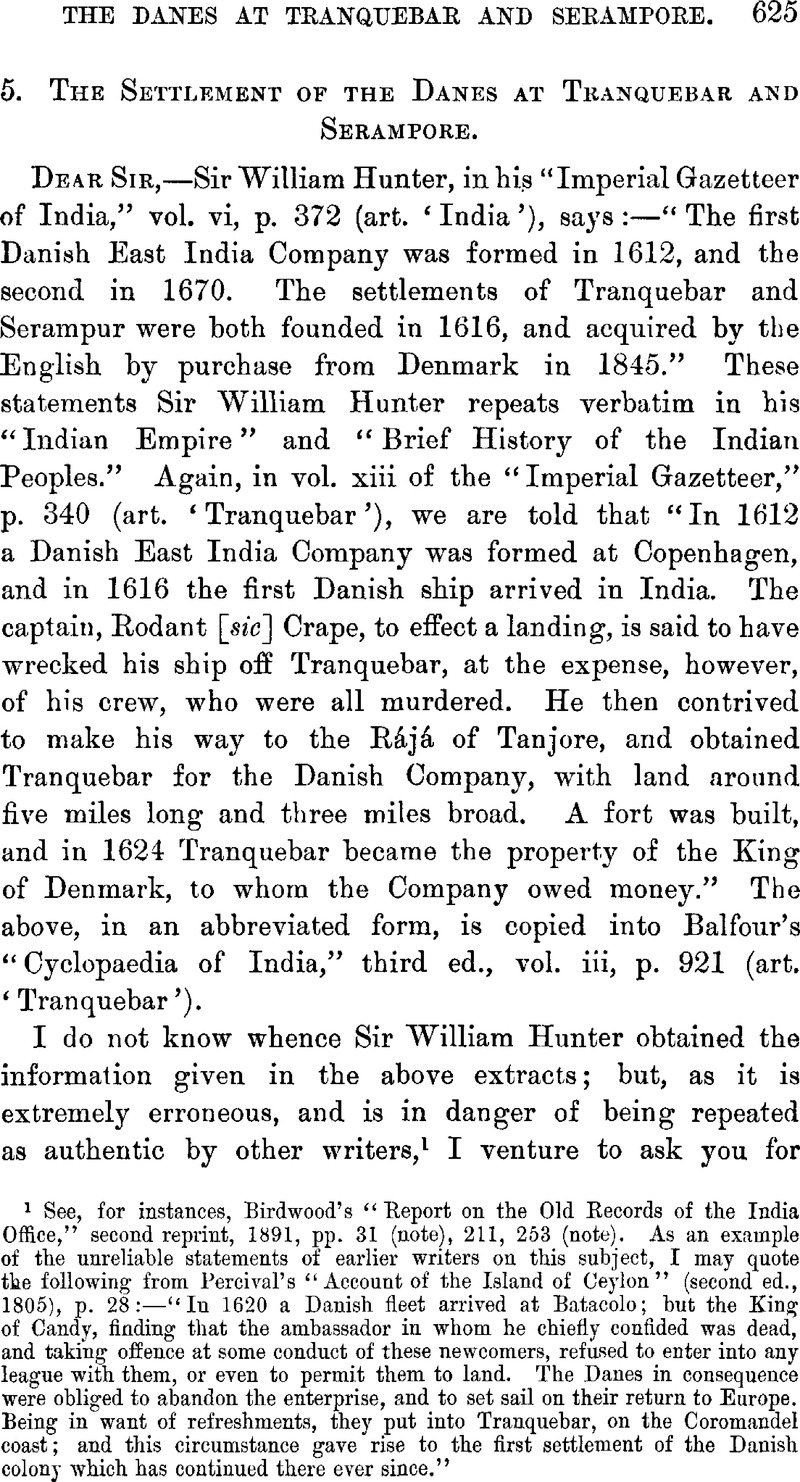No CrossRef data available.
Article contents
5. The Settlement of the Danes at Tranquebar and Serampore
Published online by Cambridge University Press: 15 March 2011
Abstract

- Type
- Correspondence
- Information
- Copyright
- Copyright © The Royal Asiatic Society 1898
References
page 625 note 1 See, for instances, Birdwood's “Report on the Old Records of the India Office,” second reprint, 1891, pp. 31 (note), 211, 253 (note). As an example of the unreliable statements of earlier writers on this subject, I may quote the following from Percival's “Account of the Island of Ceylon” (second ed., 1805), p. 28:— “In 1620 a Danish fleet arrived at Batacolo; but the King of Candy, finding that the ambassador in whom he chiefly confided was dead, and taking offence at some conduct of these newcomers, refused to enter into any league with them, or even to permit them to land. The Danes in consequence were obliged to abandon the enterprise, and to set sail on their return to Europe. Being in want of refreshments, they put into Tranquebar, on the Coromandel coast; and this circumstance gave rise to the first settlement of the Danish colony which has continued there ever since.”
page 627 note 1 Row, T. Venkasami, in his “Manual of the District of Tanjore” (1883), p. 754Google Scholar, says, “It does not appear who that Náyak Rája was”; but the Danish authorities leave no doubt as to his identity.
page 627 note 2 Hunter's, “Imp. Gaz.,” vol. xiii, p. 183Google Scholar (art. ‘India’), says: “Tranquebar settlement,…. which the Danes acquired from the Naik Rájá of Tanjore in 1620.” And yet on page 340 of the same volume we have the erroneous statements that I have quoted above.
page 628 note 1 Sir Henry Yule considered the insertion of these names as “interpolations,” because the map professes to have been compiled “under the direction of Mattheus van der [den] Broucke, who was Directeur of the Dutch affairs in Bengal from 1658 to 1664” (and died in 1685). But Colonel Yule appears to have overlooked the statement of Valentyn, on p. 160, that the map was the work of different hands at various periods, the latest to add to it being Johan van Leenen (whose name appears on the map). Sir Henry also does not seem to have noticed that the map varies considerably in different copies of Valentyn's work. For instance, in my copy the title is on the left centre, the country is represented as studded all over with hills, and the names of places are very few. On the other hand, the map in one of the British Museum copies (the other copy lacks the map) has the title in the right-hand top corner; rice-fields to a large extent take the place of hills; and the place-names are very numerous (including the so-called “interpolations”). This map also embraces a larger extent of country.


